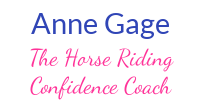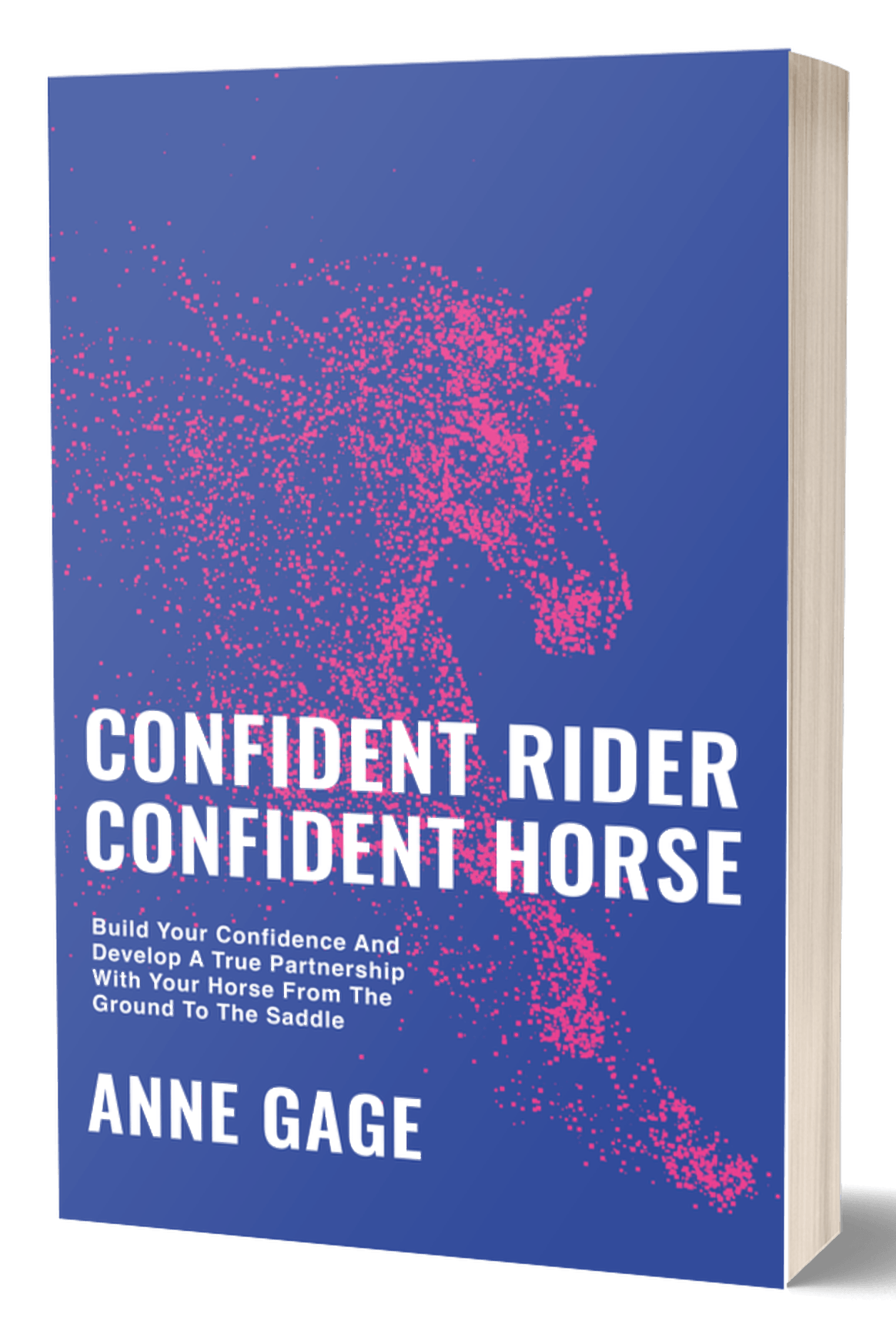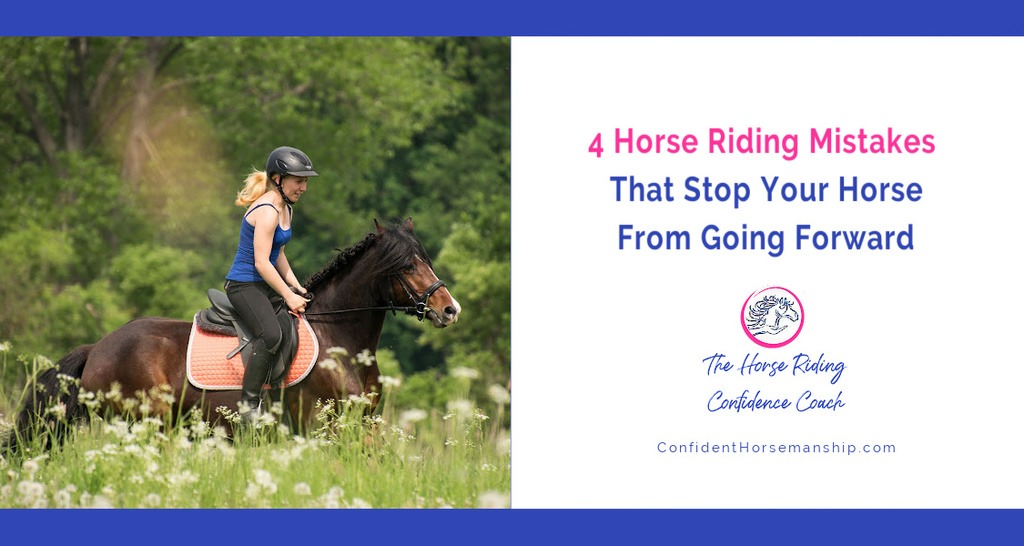
The most natural thing for a horse to do is to go forward. Yet, one of the most common complaints I hear from many horse riders is "my horse won't go forward"!
So why won't your horse go forward when it's something that comes so naturally to him? Some people might blame it on a his attitude, laziness or stubbornness.
But, the most common reason is that something is getting in the horse’s way – something that makes him feel uncomfortable or disturbs his natural balance and rhythm.
Read on for the most common rider errors that block the horse's natural movement, and some tips for correcting them.
4 Common Rider Errors That Stop Your Horse From Going Forward
Error #1: Rider Tension and Imbalance
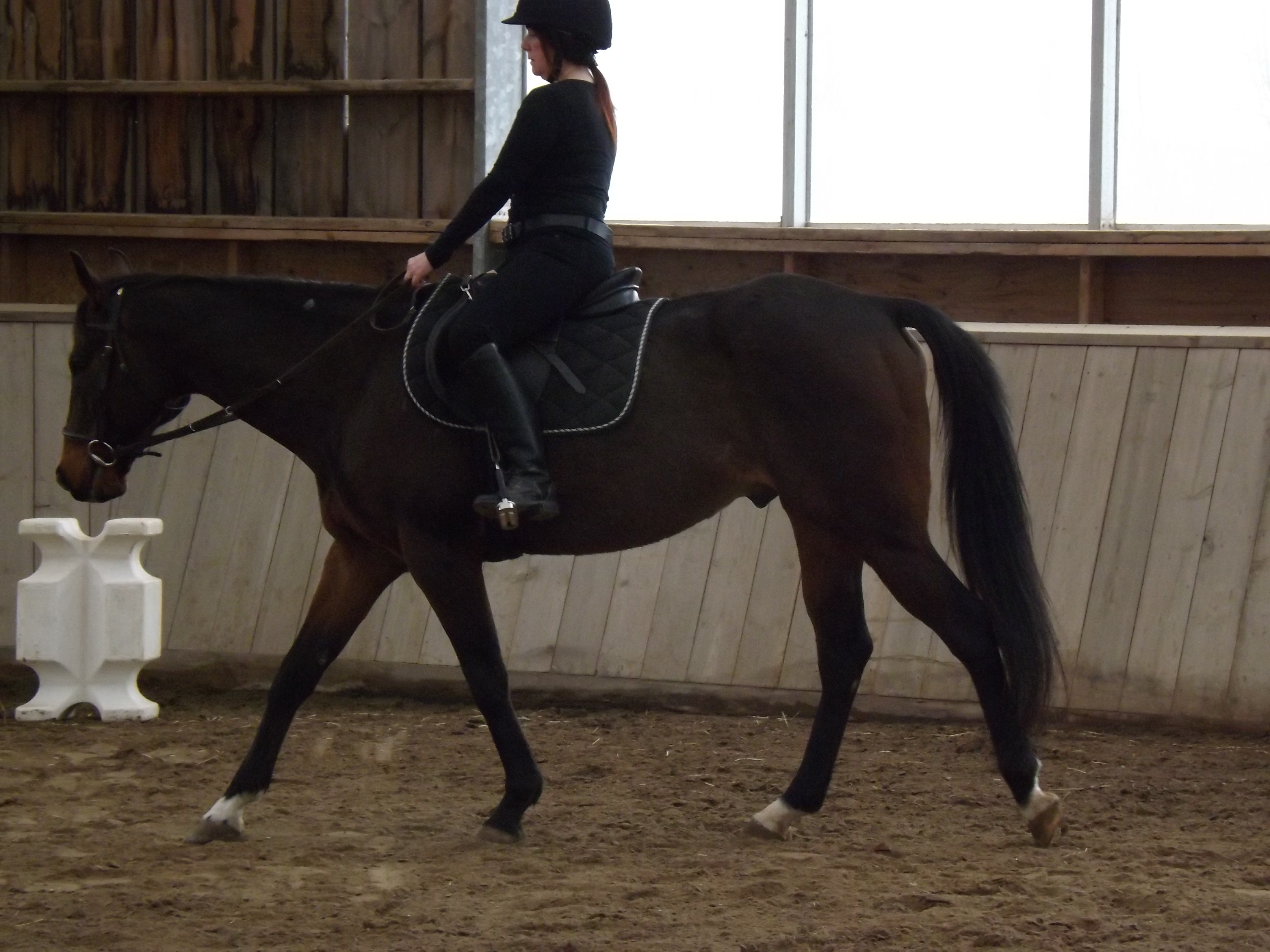
Tense arms, legs and joints create a stiff rider who interferes with her horses



Correctly aligned and supple the rider sits balanced over her seat bones
Rider tension and imbalance is a common cause of stopping your horse from going forward willingly. Because that tension interferes with his natural rhythm and movement. And that prevents him from being able to forward comfortably.
Every horse has an unique rhythm to his movement.
When a horse is relaxed, balanced and supple, his head nods (in walk and canter, but not in trot) and his back swings.
Stiffness anywhere in your body (even in your fingers or toes) creates tension in other parts of your body ... and that blocks your horse from going forward easily and comfortably.
The Fix:
Soften all your joints and muscles ... from your jaw and neck right down to your toes.
Allow your thighs to lengthen so your knees drop towards the ground.
Drop your shoulders and soften your elbows. Soften your buttocks and your lower back.
Error #2: Stuck Pelvis
Many adult riders are stuck in the hips or pelvis. And that stops their seat from following the horse’s motion.
You might notice that you struggle to feel your horse's movement.
This stiffness interferes with your horse's ability to swing his back comfortably. And therefore he can't move forward easily.
So, your horse stops moving forward willingly because it just feels uncomfortable to do so. The seat that does not follow the horse's movement hurts his back.
The Fix:
To have a following seat, you need to relax your buttocks and inner thighs so that your:
- pelvis and seat bones move independently at the walk;
- pelvis rolls forwards on the up beat of the posting trot; and,
- pelvis rolls forwards on the down beat of the sitting trot and canter.
Avoid relying on your stirrups for support as this makes your legs, hips and lower back become tense.
Error #3: Crooked Rider
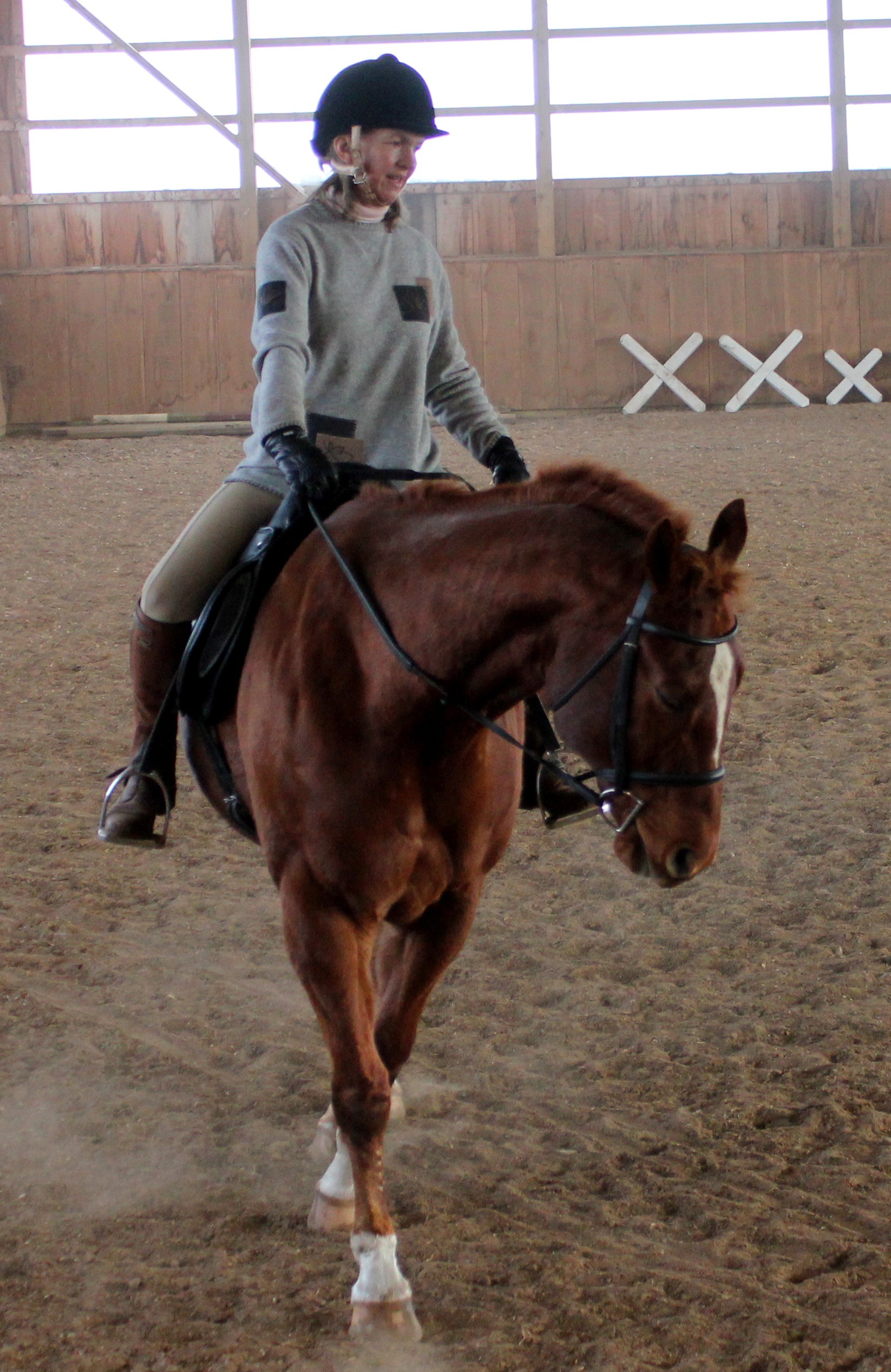


When you're crooked, you pull your horse into crookedness.
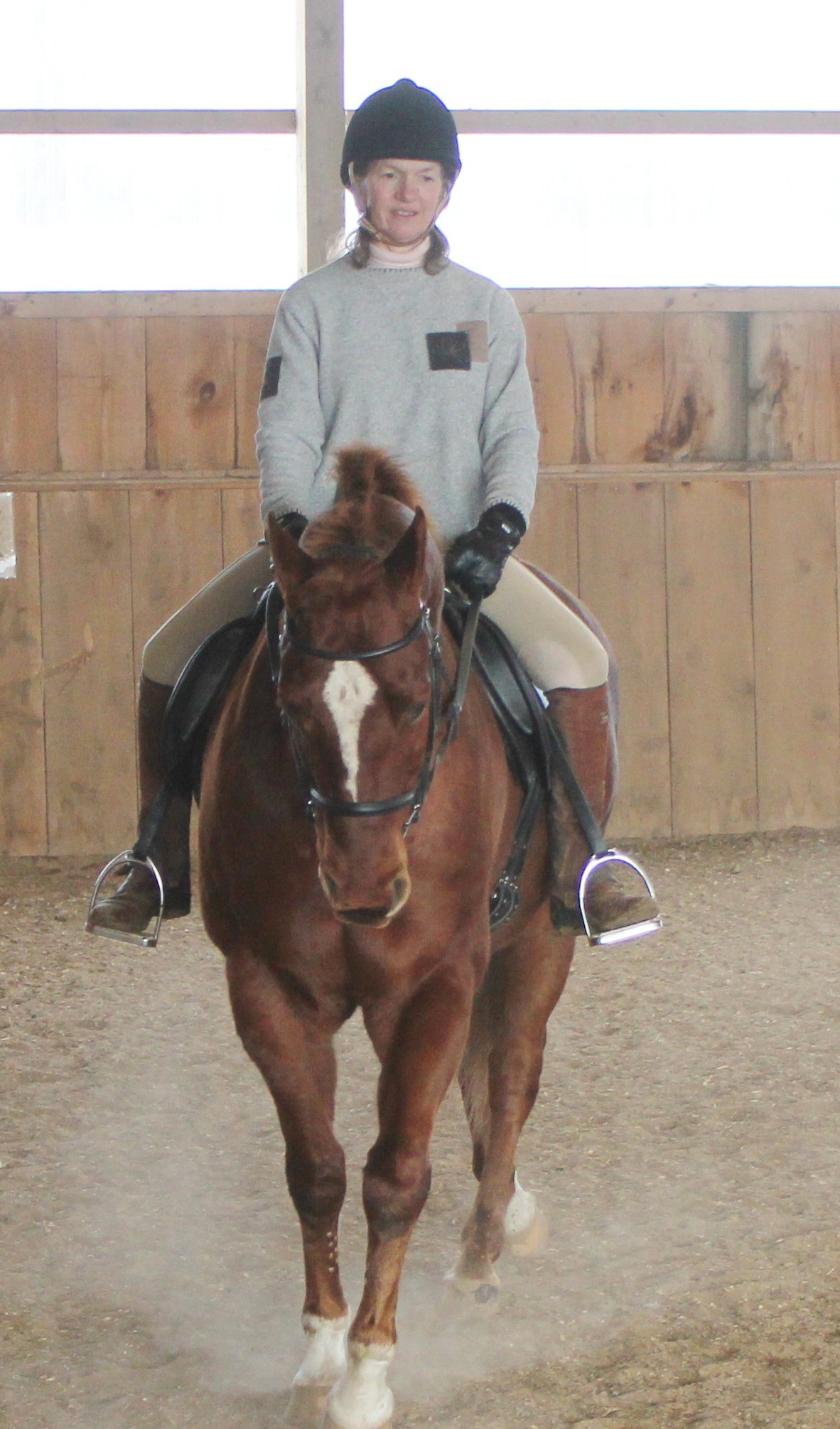


Straightness in horse and rider eliminates resistance.
Crookedness is often created by the rider sitting crooked with one hip further forward than the other, having more weight in one side than the other, or using one rein more than the other.
And the rider's crookedness makes the horse crooked.
A crooked horse is tense and imbalanced. And that stops your horse from being able to go forward easily.
In each situation, your horse feels more pressure on one side of the bit than the other. And that creates resistance in his jaw, poll and neck.
The Fix:
Keep your hips and shoulders square and aligned with your horse's hips and shoulders. Help your horse to be straight between your seat bones, legs and reins.
Your horse is straight when his nose is aligned with the centre of his chest, his shoulders and hips are square and he bends slightly around your inside leg.
Error #4: Pushing hard, squeezing and kicking
Pushing with your seat and squeezing or kicking with your legs all create tension in your body. And that tension creates tension and resistance in your horse. And that interferes with your horse’s ability to create impulsion - which is what he needs to go forward.
So, when you push, squeeze or kick harder to ask your horse to go forward, you're tensing up your body which prevents your horse from going forward.
The Fix:
Apply your aids in time with your horse’s movement. Feel your left and right seat bones and hips being moved by your horse’s hips and barrel swing. Then apply your seat and leg aids with those movements.
As one hip moves forward, push down and forward with that seat bone.
As one hip drops push gently with that calf. Your same side leg and seat bone work together on the same beat.
At the trot and the canter, apply your pushing aids on the down beat.
Use a scale of 1 to 5 for pressure. 1 is soft, passive and just in contact with your horse. 2 is a light push. 3 is a bit stronger, and so on. Move through the scale one step at a time always returning to 1 in between.
The Bottom Line: Tension, crookedness and imbalance in you affects your horse. And it's that tension, crookedness and imbalance that prevent him from being able to go forward easily.
When you become more supple and balanced, you can help your horse do the same. With the tension and discomfort removed, you will both soon be moving forward in harmony together.
Be the rider your horse needs you to be.
"After 12 years of fear I feel that I am finally coming into my own. Thank you again for your well planned book. I wake up each morning looking forward to my morning ride, and I think my horse does too!" - Katherine M.
This free (and downloadable) chapter gives you a sample of the proven and effective confidence building techniques I used to rebuild my own confidence.
Start using them right away to feel calmer about riding your horse.
Enter your details below to get you FREE CHAPTER NOW.
*You will receive occasional emails with tips on building your confidence and partnership with your horse. You can unsubscribe at any time.
